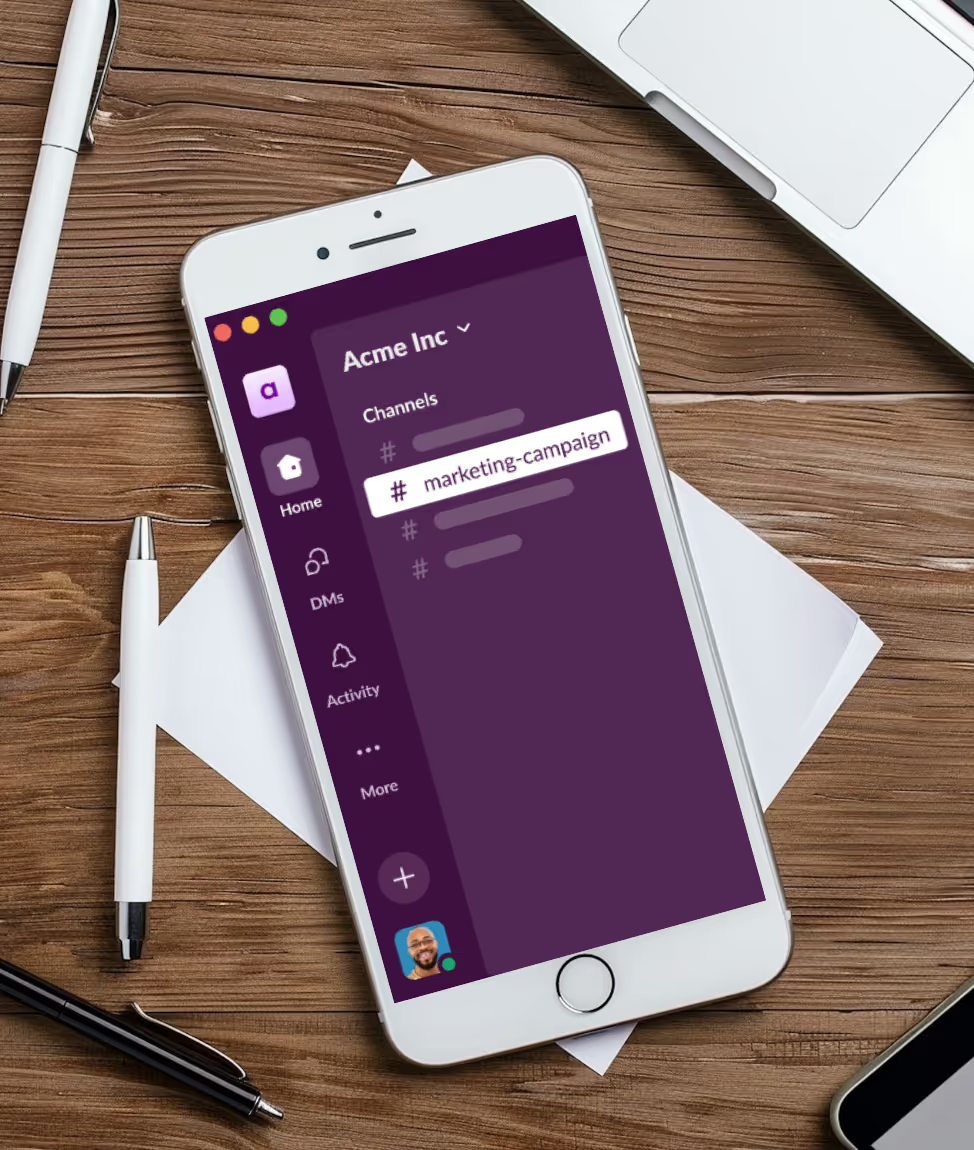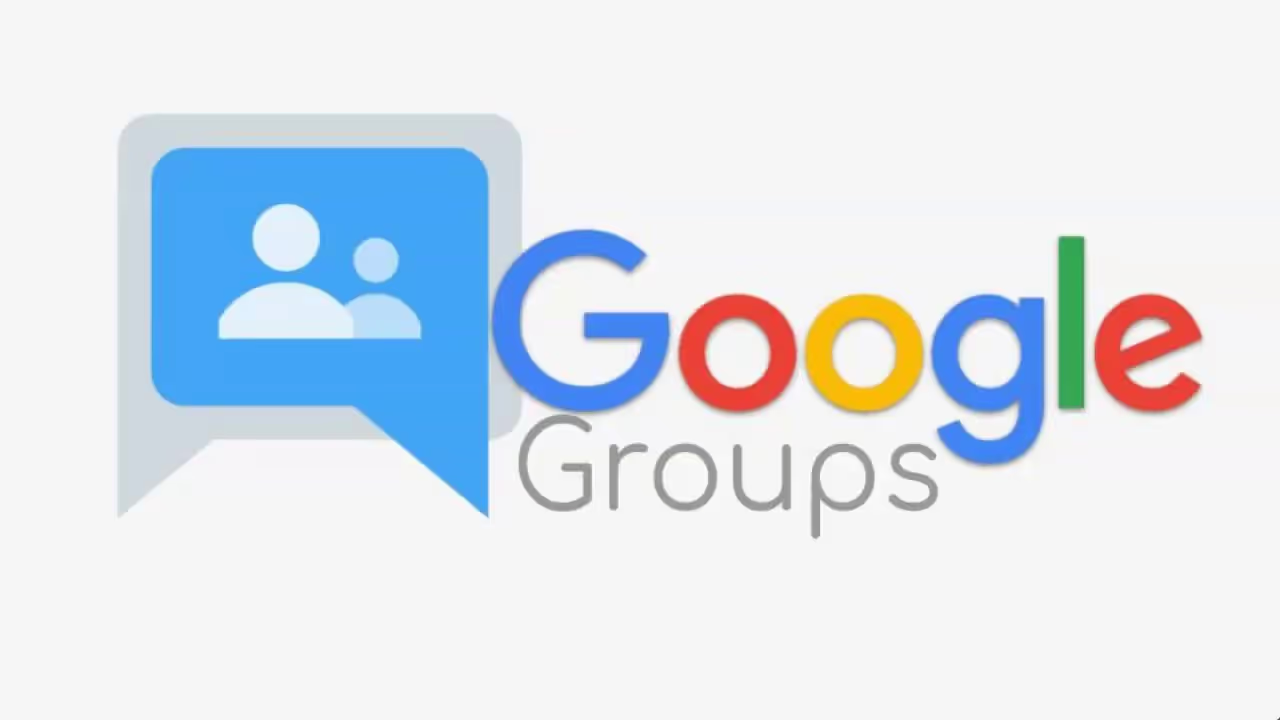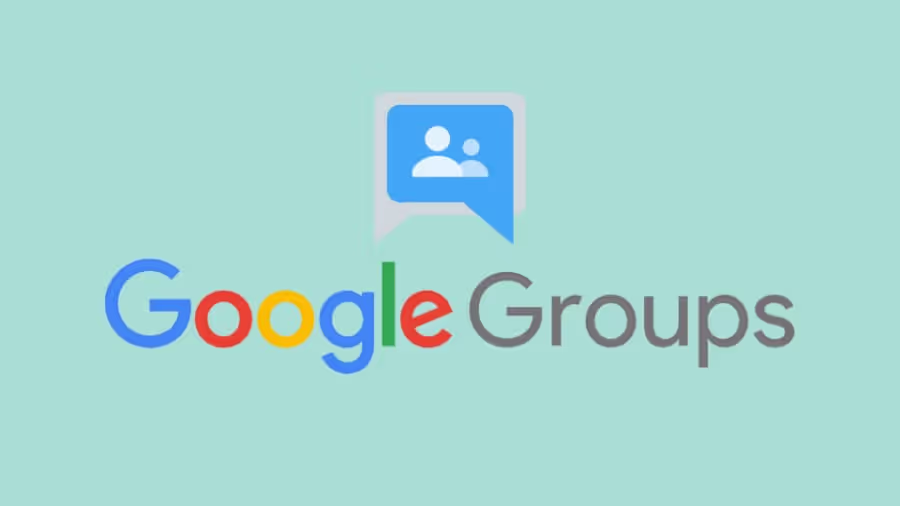À mesure que de plus en plus d'entreprises passent à des environnements virtuels et que les équipes distribuées deviennent de plus en plus courantes, les besoins de communication des équipes peuvent subir des changements tout aussi radicaux.
Le courrier électronique est la norme mondiale pour les messages en ligne, en particulier dans les entreprises, et parmi les nombreux systèmes de gestion des e-mails, Gmail est probablement le plus utilisé. Malgré cela, Slack continue de se développer en tant que plateforme populaire pour la communication entre les équipes.
Bien que la comparaison entre Slack et Email pour différentes occasions offre des informations importantes, l'intégration des deux plateformes permet aux équipes d'utiliser des messages traditionnels ainsi que des options de chat plus immédiates avec Slack. Au lieu de choisir un seul canal de communication, les utiliser ensemble peut améliorer les capacités de collaboration de votre équipe et améliorer la productivité.
Dans cet article de blog, nous allons non seulement identifier les avantages et les inconvénients de l'utilisation d'Email par rapport à Slack (et vice versa), mais surtout, nous verrons également comment vous pouvez améliorer les performances de votre équipe en combinant ces deux puissants outils de communication.

E-mail ou Slack : créez des normes de communication d'équipe
Même dans environnements de travail virtuels, certains membres de l'équipe souhaitent s'accrocher à la facilité nostalgique d'entrer dans le bureau d'un collègue pour une question rapide. D'autres apprécient la productivité accrue qu'offre le travail à distance en réduisant simplement au silence les outils de chat et de messagerie au lieu de repousser les interruptions et les distractions en face à face.
Les problèmes apparaissent lorsque les membres de l'équipe ont des attentes et des habitudes de communication différentes. C'est pourquoi l'établissement de protocoles est essentiel pour maintenir et augmenter la productivité des équipes.

L'obtention d'un consensus d'équipe simple peut éviter les frustrations causées par des réponses tardives. Informer les autres membres de l'équipe des préférences de messagerie sur les différents canaux favorise également le partage organisé des informations, renforçant ainsi la collaboration et l'efficacité des employés.
Par comparaison entre Email et Slack, les équipes peuvent déterminer quelle plateforme convient le mieux à différentes situations et apprendre à optimiser les deux plateformes. Après tout, les deux plateformes offrent des fonctionnalités différentes mais tout aussi avantageuses.
Quand utiliser le courrier électronique plutôt que Slack ?
Même si l'intégration des deux plateformes offre le plus d'avantages en améliorant la clarté de vos messages pour stimuler la productivité de l'équipe, certains cas individuels peuvent vous obliger à choisir entre les deux.
En fin de compte, chaque plateforme prend en charge une forme de communication spécifique, de sorte que l'utilisation de la plateforme varie en fonction du type d'informations que vous devez envoyer.
Slack par e-mail
Slack est un outil qui donne la priorité au chat destiné aux interactions qui reposent sur des réponses rapides sur un ton plus décontracté. Les exemples dans lesquels les utilisateurs peuvent préférer Slack à Gmail incluent, sans toutefois s'y limiter :
- Messages urgents
- Collaboration en temps réel
- Organiser les liens d'équipe : un peu de texte
- Moments quotidiens pour se rafraîchir
- Discussions hebdomadaires pour renforcer l'esprit d'équipe
- Séances de brainstorming rapides
Communication et collaboration internes peut être plus facile si vous utilisez Slack plutôt que le courrier électronique. Il est plus facile de rechercher des membres de l'équipe dans Slack, lorsque les adresses Gmail peuvent ne pas représenter le nom du destinataire.
De plus, même si vous n'avez jamais envoyé de message à un utilisateur de Slack auparavant, l'interface vous permet de le retrouver facilement. En revanche, il n'est facile de trouver quelqu'un dans Gmail que si vous lui avez déjà envoyé un e-mail.
Slack est l'outil idéal pour une forme de communication interne informelle et conviviale. Cela le rend mieux adapté que Gmail pour les messages informels de type conversation.

Même si vous décidez d'utiliser Slack comme principal canal de communication, il y a de nombreux inconvénients à l'utiliser seul. Une plateforme tierce telle que Gmelius peut offrir à Slack des fonctionnalités et des implémentations supplémentaires qui peuvent aider ses utilisateurs à communiquer facilement avec les membres de l'équipe qui préfèrent Gmail.
Gmelius peut aider intégrez vos plateformes Slack et Gmail pour accélérer l'organisation de l'équipe et le partage d'informations. Cette combinaison permet également aux membres de :
- Modifier le statut des attributions Gmail dans Slack
- Attribuez des tâches Gmail à vos collègues depuis Slack
- Répondre aux e-mails de Slack
- Synchroniser les notes Gmail avec Slack
- Intégrer boîtes de réception partagées par e-mail avec Slack
La communication asynchrone fait référence à la messagerie qui n'est pas envoyée simultanément ou lorsque les messages ne nécessitent pas de réponse immédiate.
Les expéditeurs et les destinataires peuvent mettre du temps à répondre en fournissant les informations correctes. Ce type de messagerie fonctionne selon des règles opposées à celles du jeu d'outils « chat first » proposé par Slack.
Avez-vous déjà essayé Gmelius ? Faites-le maintenant gratuitement, ici.
Envoyer un e-mail via Slack
Gmail est la meilleure plateforme pour transmettre des messages détaillés et rédigés avec précision. Les expéditeurs peuvent prendre le temps de fournir toutes les informations nécessaires compilées dans un seul e-mail, offrant un exemple parfait de communication asynchrone.
Comme il faut plus de temps pour rédiger un e-mail bien écrit qu'une réponse rapide par chat, ce moyen de communication convient mieux aux messages complets ou formels qui nécessitent des réponses moins immédiates.

Le courrier électronique permet également de suivre facilement les fils de discussion et de revenir en arrière dans les anciennes conversations. Cet historique consultable est l'une des plus grandes forces du courrier électronique. Il peut être difficile de suivre les conversations sur Slack en raison de sa rapidité et de sa nature axée sur le chat.
Gmail regroupe vos messages pour fournir un ordre chronologique concis des messages afin de faciliter la recherche d'informations.
Il est préférable d'utiliser le courrier électronique pour les communications et l'organisation externes de longue durée ou officielles. Bien que vous puissiez rechercher un message dans Slack, le courrier électronique offre aux utilisateurs une fonction de filtrage qui leur permet de rechercher des messages en fonction des critères suivants :
- Expéditeur
- Sujet
- Taille
- Date
- Message
- Pièces jointes
Les recherches filtrées aident les utilisateurs à organiser leurs boîtes aux lettres et à retrouver facilement les messages importants.
Offres Gmail des analyses qui peuvent bénéficier aux équipes, mais les outils d'analyse natifs de Google Workspace sont limités. Pour donner aux dirigeants une lecture de base sur la productivité, Gmelius améliore les analyses de Gmail avec davantage de fonctionnalités et d'implémentations.
Que votre équipe décide d'utiliser Slack ou Gmail comme principale plateforme de communication, ces analyses s'avéreront bénéfiques. Lorsque vous répondez à un e-mail, que ce soit depuis Slack ou Gmail, le suivi du délai moyen de réponse permet d'identifier les blocages et autres obstacles à la réussite des projets.
Gmelius donne également à Gmail plus d'automatisation pour organisation du flux de travail. Pour les chefs d'équipe, l'automatisation des flux de travail est essentielle pour faire face à l'afflux de projets et de tâches. En utilisant le processus logique « si ceci, alors cela » de Gmelius, vous pouvez :
- Modifier le statut de l'affectation
- Envoyer des réponses automatisées
- Assignez des tâches à vos coéquipiers
- Définissez des objectifs temporels à l'aide de règles SLA
E-mail ou Slack ?
En fin de compte, la plupart des membres de l'équipe préféreront une plateforme à l'autre. Par conséquent, les membres de l'équipe répartiront leur utilisation entre les deux plateformes, ce qui nuira à la clarté des informations partagées, à moins que les équipes ne puissent apprendre à tirer parti des avantages des deux.
Étant donné que chaque outil présente des atouts différents, l'utilisation des deux plateformes pour des raisons différentes maximise vos avantages en matière de communication et de collaboration. Augmentez la productivité de l'équipe et aidez à unifier les membres de l'équipe qui préfèrent l'une à l'autre en intégrant les deux plateformes.
Consignes relatives à l'utilisation du courrier électronique et de Slack
Les deux applications étant tout aussi utiles, vous pouvez commencer par définir quelques directives claires concernant l'utilisation de Slack et le courrier électronique. Cela évitera les confusions et la collaboration entre les équipes sera rapidement améliorée.
1. Finalité de la communication
Courrier électronique : Réservé aux communications formelles, détaillées et externes. Il est idéal pour transmettre des informations importantes qui doivent être documentées, telles que des propositions de projets, des mises à jour officielles et l'envoi de messages nécessitant un enregistrement ou ayant des implications légales/de conformité.
Slack : Utilisé pour les communications informelles, en temps réel et internes. Il est idéal pour les mises à jour rapides, les séances de brainstorming et les communications ad hoc qui sont plus fluides et nécessitent des réponses rapides ou un dialogue continu.
2. Type de message
Courrier électronique :
- Communications commerciales officielles (internes ou externes).
- Rapports, contrats ou documents importants nécessitant des pièces jointes ou une mise en forme officielle.
- Des instructions détaillées ou des explications détaillées qui doivent être clairement comprises.
- Communications avec les parties prenantes externes, y compris les clients, les fournisseurs et les partenaires.
- Messages nécessitant une approbation officielle ou une action de la part des destinataires.
Slack : Questions ou précisions rapides (par exemple, « Quelqu'un peut-il m'aider à ce sujet ? »).
- Discussions d'équipe, coordination des projets et mises à jour urgentes.
- Partagez des idées, des idées ou des liens rapides pour obtenir un feedback immédiat.
- Annonces informelles et communication interne (par exemple, rappels de réunions, mises à jour).
- Conversations collaboratives ou boucles de feedback.
3. Degré d'urgence
Courrier électronique : Idéal pour les questions non urgentes ou non urgentes qui peuvent être traitées sur une plus longue période, telles que les propositions ou les contrats assortis de délais. À utiliser pour les communications qui ne nécessitent pas de réponse immédiate mais qui restent importantes.
Slack : Idéal pour les problèmes urgents nécessitant une réponse rapide ou une interaction en temps réel (par exemple, problèmes de système, blocages de projets). Les messages Slack sont l'outil idéal lorsque vous avez besoin d'une messagerie instantanée ou de précisions sur des tâches.
4. Documentation et tenue de registres
Courrier électronique: Utilisez le courrier électronique lorsque les communications doivent être archivées ou stockées à des fins de tenue de dossiers. S'il est nécessaire de suivre un fil de discussion à des fins de conformité, d'audit ou de référence future, le courrier électronique vous servira de garantie.
Slack: ses fonctions de recherche permettent de retrouver les discussions passées, mais elles ne sont généralement pas utilisées pour la tenue de dossiers officiels. Les messages Slack sont utiles pour la communication sur le lieu de travail qui n'a pas besoin d'être conservée à long terme.

5. Longueur et complexité du message
Courrier électronique : Idéal pour les messages longs, les explications détaillées et les informations complexes qui nécessitent un examen ou une mise en forme minutieux. Inclut des messages contenant des pièces jointes, des documents ou des informations détaillées qui doivent être lus, référencés ou traités dans un cadre plus formel.
Slack : Idéal pour les messages courts, les mises à jour rapides ou les communications asynchrones ne nécessitant pas d'explication approfondie. Encourage les échanges, évitez donc de l'utiliser pour des détails longs ou complexes.
6. Ton et formalité
Courrier électronique: Utilisé lorsqu'un ton professionnel ou formel est requis, en particulier pour communiquer avec les clients externes, la direction ou les partenaires. Indispensable pour les situations nécessitant clarté et politesse de ton.
Slack : Idéal pour un ton décontracté ou un style conversationnel. Idéal pour une communication rapide et informelle et pour favoriser un environnement collaboratif.
7. Communication multidestinataire ou communication directe
Courrier électronique : Utiliser pour communications de groupe où de multiples destinataires doivent être informés ou impliqués, en particulier lorsque ces informations doivent être détaillées et claires.
Slack : Idéal pour les discussions en petits groupes, les communications internes ou les messages directs entre les membres de l'équipe ou les groupes de projet.
Dans certains cas, il peut également être utile de décrire les situations dans lesquelles l'utilisation simultanée des deux outils peut être appropriée, comme le suivi sur les canaux Slack avec un résumé officiel ou une décision par e-mail. Cela crée un flux de communication fluide, où chaque outil répond à sa destination.
En créant ces directives et en encourageant leur respect constant, votre équipe passera moins de temps à débattre de l'outil à utiliser et plus de temps à se concentrer sur la tâche à accomplir. Des normes de communication claires réduisent non seulement la confusion, mais favorisent également une productivité, une efficacité et une clarté accrues à tous les niveaux.
E-mail et Slack : profitez du meilleur des deux mondes
Pour éviter toute confusion, créez des directives internes claires qui stipulent quel outil utiliser pour les différents types de messagerie et oubliez le « débat entre Slack et e-mail ». Vous pouvez réunir les deux plateformes avec Gmelius, et découvrez certaines des intégrations supplémentaires qui peuvent contribuer à améliorer la productivité de votre équipe.
Découvrez toutes nos fonctionnalités et intégrations et découvrez comment Gmelius est conçu pour améliorer la communication et la collaboration au sein des équipes. Prêt à démarrer ? Inscrivez-vous dès aujourd'hui !



.png)
.avif)

.avif)

.avif)